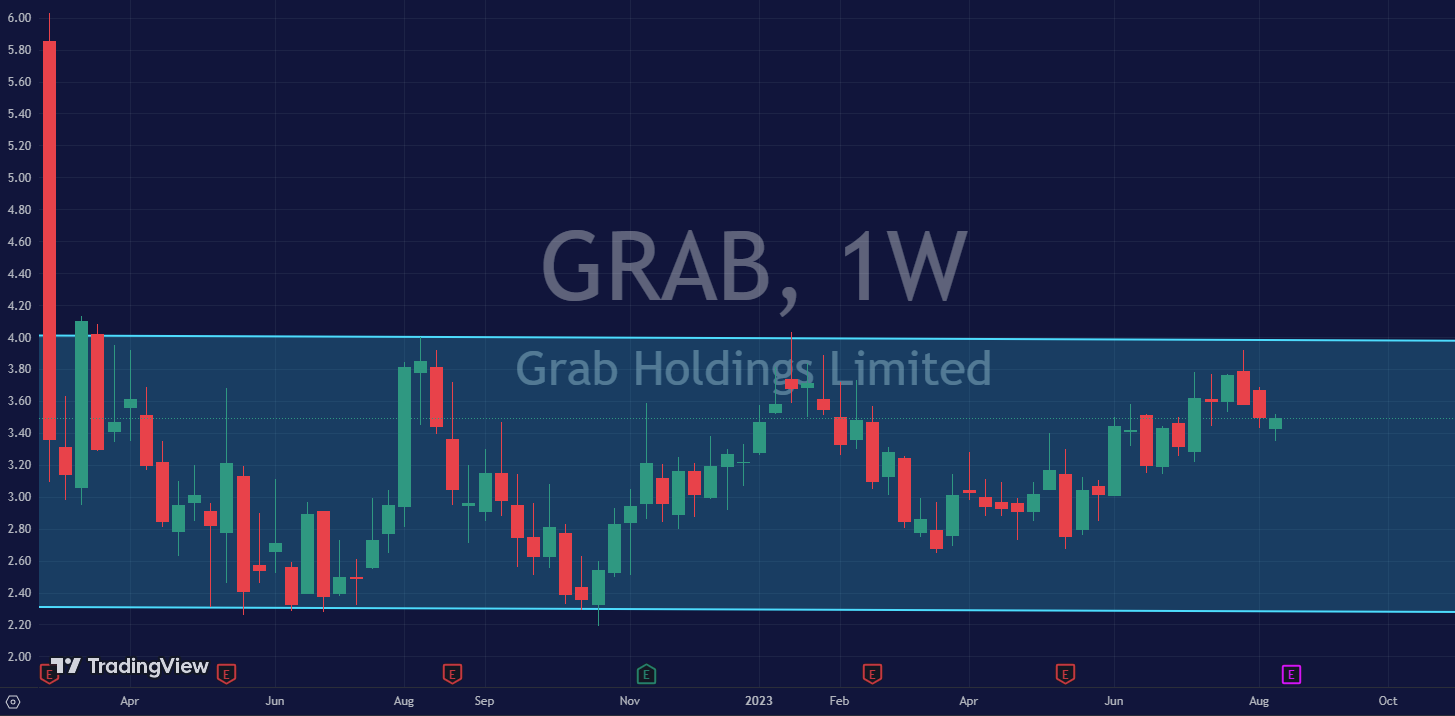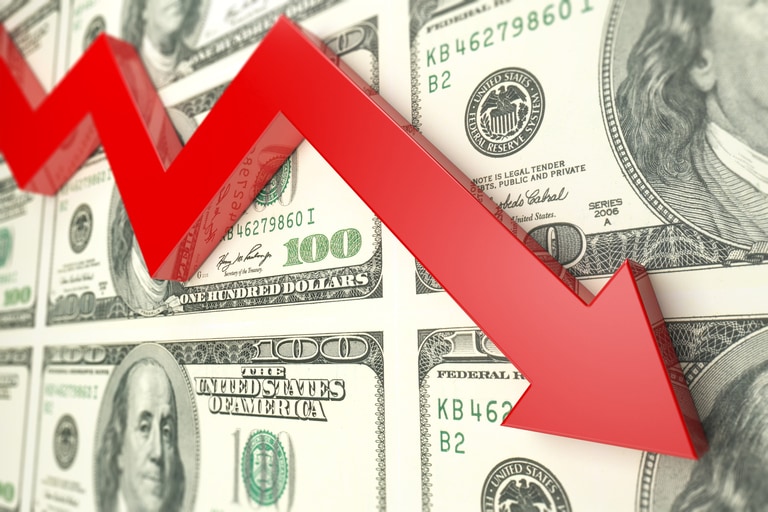When it comes to Southeast Asian unicorn companies, Grab Holdings is definitely top-of-mind given its prevalence in today's fast-paced digital economy. Thanks to its multi-faceted business model, Grab Holdings has emerged as a dominant force across Southeast Asia. Although this diversified approach has helped Grab carve out a significant market share in the region, it also calls Grab's financial viability into question. As a capital-intensive start-up, the past year has been painful for Grab's financials as the pre-revenue enterprise continues taking on debt to sustain its operations. As we edge closer to the fourth quarter of 2023, many are wondering if profitability is within reach for Grab. This article aims to dissect the financial health and growth strategies of Grab Holdings, providing valuable insights for investors, industry analysts and enthusiasts keen on understanding the trajectory of this dynamic company. Can Grab Holdings secure its path to profitability by its projected timeline of Q4 2023? Let's dive in and explore the factors that will determine its financial fate this earnings season as Grab Holdings reports its Q2 2023 results on 23rd August, before the market opens.
What Is Grab Holdings?
Grab Holdings Inc. is a Southeast Asian multinational technology company that offers an everyday everything super app. While the company was originally founded in 2012 to make taxi rides in Malaysia safer, the taxi-hailing app now offers services ranging from food delivery to digital payments.
From ride-hailing and food delivery to e-commerce and fintech services, Grab Holdings has grown immensely since its initial taxi-hailing days. As a leading player in Southeast Asia's up-and-coming digital landscape, Grab's mission is to drive the adoption of seamless and accessible digital services. With operations in over 630 cities across eight countries, Grab has firmly established itself as a one-stop platform for consumers to access various services through its user-friendly app.
Grab's SPAC Merger & Downfall
Grab's innovative business model and relentless pursuit of growth not only made it a formidable force in the competitive tech ecosystem of Southeast Asia. In December 2021, Grab was the largest Special Purpose Acquisition Company merger deal to date. At a US$40B valuation, Grab was red-hot in the US markets when it became publicly traded on NASDAQ as trading volume exceeded 35M shares. Unfortunately, the euphoria of its NASDAQ listing was short-lived as analysts began to worry about Grab's route to profitability because of its capital-intensive nature. Add to this a whirlwind of macroeconomic headwinds involving high interest rates and rising inflation and you had a perfect storm that caused GRAB shares to tumble and lose more than 80% of their value.
Why Isn't Grab Profitable?
Despite its impressive growth and market dominance in Southeast Asia, Grab has yet to achieve profitability due to several factors.
Firstly, the company faces intense competition from rivals like Gojek, TADA and ComfortDelGro. This has led to aggressive pricing strategies, promotions and driver incentives, all of which have gone on to erode Grab's profit margins as the heightened competition has essentially become a race to the bottom.
Secondly, Grab's uncapped ambitions have led to it becoming a victim of its own success. Although the company has enjoyed impressive growth in user numbers and market share, this has led to an increase in operational costs as Grab has had to invest heavily in sustaining its operations. By offering services across a diverse range of sectors across different countries, Grab has had to invest massively in infrastructure, technology development, marketing, and customer acquisition. These high operating costs have further strained the company's bottom line.
Lastly, market uncertainties in the region have also contributed to Grab' s difficulties in attaining profitability. These range from the supply shocks caused by the Russian-Ukraine conflict to the creeping cost of inflation impacting demand for Grab's various services.
Grab Q1 2023 Earnings Review
Here are some important takeaways for investors and traders based on Grab's previous quarterly earnings:
1. Growth in Revenue YoY
One key factor that will impact Grab's viability as a business is the revenue it can possibly bring in. While management is focused on cost-cutting, revenue remains the engine that will drive the likelihood of Grab's profitability. Q1 2023 revenue came in at US$525M and represents a 130% increase on a YoY basis. This was largely attributed to overall segment growth and reduced doled-out incentives.
2. Lower than Expected GMV Growth
Despite hitting it out of the park regarding overall revenue growth, Gross Merchandise Value (GMV) numbers failed to see the same optimism as they came in at US$4.95B. At just a 3% YoY growth, alarm bells began to ring for bullish investors and traders as Wall Street analysts had expected a GMV of US$5.22B. This was the main reason GRAB shares plunged after Q1 earnings were reported as GMV growth wasn't aligned with the optimism seen from Grab's robust revenue growth.
3. Cutting Expected Adjusted EBITDA Losses
Although Grab reported disappointing GMV growth numbers, management remained optimistic about its business outlook. Grab still expects its business to approach profitability and achieve adjusted EBITDA breakeven in Q4 of this year. Moreover, they reduced their adjusted EBITDA losses from the previous range of US$275M - US$325M to US$195M - US$235M. These statements from management ultimately reflect the optimism of Grab's management towards fears like slowing demand for Grab's services and macroeconomic headwinds.
What Are the Key Catalysts That Could Impact Grab's Q2 2023 Earnings?
Grab’s Q2 2023 earnings could be affected by a variety of catalysts. Here are some of the most important ones to keep an eye on:
1. Demand for Grab's Products & Services
Grab's earnings are heavily influenced by the demand for its various products and services, including ride-hailing, food delivery, and digital payments. Factors such as changing consumer behaviour, technological advancements, and regional economic conditions can significantly affect this demand. For example, the COVID-19 pandemic spurred a surge in demand for contactless food deliveries and e-commerce transactions. This drove Grab's revenue numbers to all-new highs. Conversely, a prolonged economic downturn or widespread adoption of alternative transportation modes could negatively impact demand. To gauge management's sentiment of demand for Grab's products and services, look out for its guidance numbers and whether they're positively or negatively adjusted in light of the current high inflation and high-interest rate macroeconomic situation.
2. Management's Update on Grab's Profitability
Thanks to the recent Q4 earnings call with Grab's management, stakeholders went from asking "Is Grab profitable?" to "When will Grab be profitable?". Grab has made discretionary spending and improving its profitability key focuses amid millions in losses that were ballooning out of control thanks to the stiff macroeconomic environment. With reference to its Q4 2022 earnings report, Grab claimed to have achieved revenue growth of 310% Year-on-Year while still improving its margins and maintaining market leader status in its Mobility and Food Deliveries sectors. As a result, CFO Peter Oey has since brought forward the company's estimated profitability timeline, shifting the breakeven guidance from the second half of 2024 to the fourth of 2023. While this positive sentiment shift has impressed the likes of many analysts and long-term investors, this upcoming earnings report will tell if Grab can execute its plans of achieving profitability.
3. Local Regulatory Environment
The regulatory landscape in Southeast Asia varies across countries, with each government implementing different policies and restrictions concerning ride-hailing, food delivery, and digital payments. Changes to existing regulations or the introduction of new policies could either bolster or hinder Grab's operations, ultimately affecting its earnings. For instance, stricter regulations on driver employment status or data privacy could increase compliance costs, while more favourable policies could open up growth opportunities. Investors should keep a close eye on the evolving regulatory environment and assess its potential impact on Grab's financial performance.
4. Tough Competition from Alternative Services
As previously mentioned, Grab faces stiff competition from local ride-hailing platforms like Gojek and other emerging players in the region. These competitors often engage in aggressive pricing strategies and promotional campaigns to attract customers, pressuring Grab to price match its competitors or offer heavier discounts to maintain its market share. This competitive dynamic could lead to increased operating costs and reduced profit margins, ultimately impacting Grab's Q2 2023 earnings. Investors should monitor the competitive landscape and evaluate how Grab is responding to these challenges, as well as any potential alliances or mergers that could reshape the volatile industry.
5. Macroeconomic Headwinds
While Grab's management has done well in positioning itself for future innovation and growth given its diversified revenue streams and varied business models, such decisions may do little in the broader scheme of things thanks to worsening macroeconomic conditions. From a potential United States debt ceiling crisis to the rapid raising of interest rates, the volatility present in today's economy is unfavourable for a tech company like Grab that relies on consumer spending to bolster its revenue numbers. With the future of economic conditions still relatively uncertain, Grab's Q2 2023 earnings could be under pressure due to softer consumer spending.
6. Trans-cab Holdings Acquisition
Grab made headlines when they announced their acquisition of Trans-cab Holdings for more than S$100M. This was done with the aim of growing Grab's driver base and improving the reliability of its ride-hailing service. The acquisition involves transferring ownership of multiple assets, including a combined fleet of more than 2,500 vehicles, maintenance workshops and fuel pump operations. With the completion of this deal, Grab will likely have more than enough drivers to address the constant price surges that are caused by a supply crunch, which has been plaguing the industry since the pandemic.
Based on the abovementioned factors, Grab is undoubtedly an exciting stock for investors and speculators to trade during these volatile times. With the potential for positive and negative catalysts to drive Grab’s stock price in either direction, Grab's Q2 2023 earnings report is certainly diving into as Grab weighs profitability against their need for exponential growth.
Grab Earnings: Technical Analysis

Since crashing more than 37% because of its losses in its Q4 2021 earnings report, GRAB shares have been trending within a clearly defined range. While the near-term directional bias is to the downside as GRAB shares bounce off the upper end of the range defined in the chart above. Positive news from its upcoming earnings report might cause GRAB to surge towards the upper end of the channel to retest the resistance at US$4. Bullish GRAB share traders will need to look out for positive guidance from Grab that allows them to reach their US$6.8B annual revenue target. Additionally, said investors and traders may want to see catalysts like an update on Grab's route to profitability and an earnings report above the expected loss of four cents per share.
Conversely, bearish GRAB share traders might be looking out for negative news that will drive GRAB shares downwards after the rejection at the US$3.90 range. This can range from a delay to Grab becoming profitable to unexpected losses that may add to its balance sheet worries. As macroeconomic fears creep in, Grab might not be able to deliver when it comes to guaranteeing its profitability timeline. If management reports negative earnings, GRAB shares could decline further and retest the support at US$2.30.
The Bottom Line
By and large, Grab's Q2 2023 earnings report looks to be impacted by several factors, including demand for its products and services, management's ability to maintain profitability, the local regulatory environment, competition from alternative services and macroeconomic headwinds. While Grab has made significant strides in improving its margins and achieving revenue growth, investors should closely monitor these catalysts to assess the company's performance going forward. The bringing forward of its expected breakeven period is already a step in the right direction when it comes to reinstilling confidence in long-term Grab investors. Only time will tell as to whether this is a sign of solid management and leadership or baseless optimism.
Interested in reading about a similar Singaporean unicorn? Check out our article about investing in e-commerce stocks in 2023, where we highlight companies like Amazon, Sea Limited and Alibaba. Alternatively, if you prefer investing in safer blue chip stocks found on the Singapore exchange, read our guide to investing in Singapore bank stocks.
Disclaimer: CMC Markets is an execution-only service provider. The material (whether or not it states any opinions) is for general information purposes only, and does not take into account your personal circumstances or objectives. Nothing in this material is (or should be considered to be) financial, investment or other advice on which reliance should be placed. No opinion given in the material constitutes a recommendation by CMC Markets or the author that any particular investment, security, transaction or investment strategy is suitable for any specific person. The material has not been prepared in accordance with legal requirements designed to promote the independence of investment research. Although we are not specifically prevented from dealing before providing this material, we do not seek to take advantage of the material prior to its dissemination.






